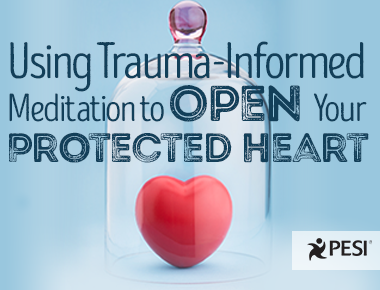Trauma-Informed Meditation

Many of us have experienced some level of trauma in our lifetime. Adverse events come in all shapes and sizes, and affect us to varying degrees. We are often left with a Protected Heart, creating barriers in our development. Yet, there are ways to engage in Open Heart practices effectively and carefully.
The typical instruction for meditation practices is to allow the experience to unfold without judgement or intervention, to observe without reaction, or to label experience and return to the target of attention or awareness. Often, various forms of body sensing or breath focus are included. In group classes, students are directed to stay with sensation, discomfort, or emotional distress, often for extended periods of time. These situations commonly occur in yoga classes, as well.
For individuals who have experienced traumatic or overwhelming life events, this kind of instruction often contributes to overwhelming affect and bodily sensations. Trauma survivors may decide that they are not capable of meditation, or that it‚Äôs ‚Äúnot right for them.‚ÄĚ It‚Äôs important to understand that traumatic experiences can significantly affect our perceptions and our sense of self, and can sensitize us to sensations, thoughts, and emotions. Fortunately, there are helpful ways to ensure that meditation instruction is trauma-informed, with an emphasis on grounding and physical and emotional security.
If you become overwhelmed with emotions, sensations, or images, please consider:
- Opening your eyes, looking around the room
- If lying down, sit up.  If sitting, consider standing
- Use grounding skills
- Move in place (stretch arms, realign seated position, stretch neck and head, press palms together firmly over heart center, open the chest area for strong breathing).
- Get up and quietly walk around
- Leave the room
The most important thing is discernment, or clearly sensing your needs with regard to overwhelming affect, thought, or sensation. If you are overwhelmed, then it’s ok to take a break. Supporting the body and mind in the practices strengthens our ability to engage in meditation. If you are struggling, use that as information and respond with intention and compassion. 
*Note that these modifications may also be useful at an early developmental stage in meditation, or those coping with severe current life stressors. |
Learn more from Jeff Tarrant, Ph.D., BCIA-EEG,BCN, by .
Topic: Clinical Psychology and Psychiatry
Tags: How To | Mindfulness | Trauma | Trauma Treatment | Meditation


